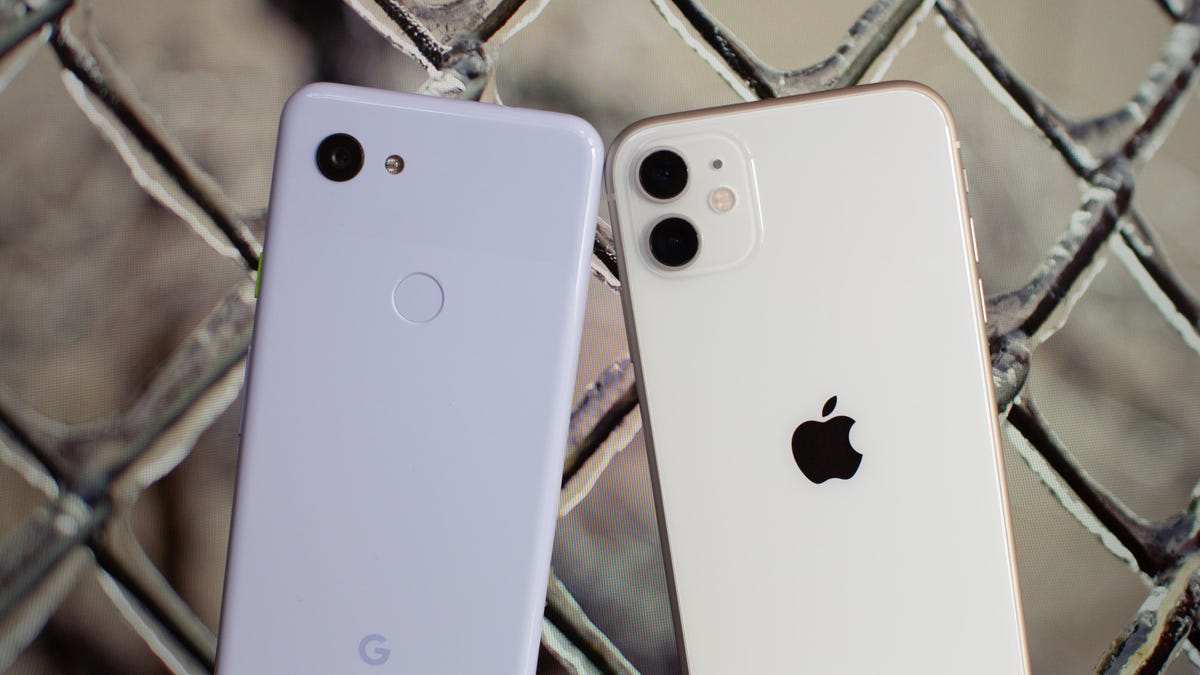Apple, Google deliver early tools to public health authorities for coronavirus tracking
The companies are handing over the first seeds of an application programming interface before they release the full API in mid-May.

Apple and Google have been working on technology to make it easier to track who people infected by COVID-19 have been around.
Apple and Google are delivering the first tools for their coronavirus tracking technology on Wednesday to certain public health authorities, with the aim of improving the technology before the software's full release in mid-May.
During the initial testing phase, a limited group will gain access to the first seeds of the exposure notification application programming interface. The move follows Apple's and Google's normal operations for introducing new software. They work with a small group of developers to be sure the technology doesn't have bugs or other issues before introducing it more broadly. It also allows Apple and Google to get feedback to make improvements to the technology's various features before it's rolled out to more developers.
The two companies plan to share more details on Friday, including sample code to help developers understand how the system will work. They'll also add more developers to the testing phase.
Apple and Google earlier this month said they were working together on a major effort to stop the spread of COVID-19 that uses signals from people's phones to warn them if they've been in contact with someone over the past 14 days who's tested positive for the disease.
The joint project takes advantage of two of the world's most popular operating systems -- Apple's iOS and Google's Android -- to potentially reach billions of people. The tools will use Bluetooth radio technology to support apps that will be developed by public health authorities, and iPhones and devices powered by Google's Android software will be able to communicate with each other.
The new coronavirus, which causes a respiratory illness called COVID-19, was first detected in the Chinese city of Wuhan late last year. Since that time, it's become a full-blown pandemic, infecting over 3.1 million people around the globe. The outbreak has caused cities and entire countries around the globe to issue lockdowns, shuttering stores, canceling events and forcing citizens to stay at home to help contain the coronavirus.
Tracing exposure
Apple and Google eventually plan to build the contact-tracing capability into their mobile operating systems , building off the public health apps. Once it's part of the OS, tracking could be even easier, but that will require people to update their phone software, a problem that dogs the industry. A software tool, after all, is only as effective as the number of people who can access it. Experts believe at least half the population would have to opt in to the tracing technology, meaning the companies would need to convince potentially billions of people to sign up.
At the same time, privacy watchers and civil liberties advocates have warned that relying on technology will create a disparity on who is counted when governments make public health decisions. Apple and Google have sought to alleviate fears about privacy by tweaking how the system will work. For one, it will be opt-in, meaning it won't be turned on by default.
Apple and Google on Wednesday said they've already published information on the Bluetooth and cryptography specs for public health apps. The documentation incorporates feedback from public health organizations, academics, nonprofits and developers. That includes the ability to define and determine the exposure risk level for someone who's been notified about exposure to a person infected with COVID-19. It will take into account how close the two people were and how long they were in close proximity. There have been worries that someone passing by another person's window would trigger a warning about possible exposure. The risk will be calculated on users' devices in the tracing app and won't be shared with Apple or Google.
Starting Wednesday, select developers will be able to access the first beta release of Xcode 11.5, a prerelease seed of Apple's developer tools that contains a new version of the company's iOS software development kit that includes the exposure notification API. Apple also is releasing the third beta of iOS 13.5, the first version of iOS that will have the code needed to run apps with the coronavirus tracking technology.
And Google on Wednesday released its beta Google Play Services update with the exposure notification API and SDK to certain developers to begin testing.
CNET's Richard Nieva and Alfred Ng contributed to this report.

